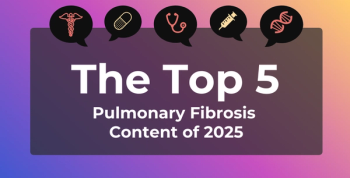
Helping Patients Understand IPF Diagnosis and Treatment
Martin Kolb, MD, PhD, highlights the importance of taking time to explain the complexities of idiopathic pulmonary fibrosis (IPF) to patients before starting long-term treatment.
Kolb also serves as a pulmonary physician and director of research at the Firestone Institute for Respiratory Health at St. Joseph’s Healthcare, as well as Jack Gauldie Boehringer Ingelheim Chair in Interstitial Lung Disease.
Transcript
Once you've confirmed an IPF diagnosis, how do you approach the conversation about starting treatment, and what factors do you consider to determine the best next steps for the patient?
As I said before, dealing with cancer, everyone knows what that means. You know a neighbor, a family member, a relative of someone else who has had cancer, and you know this is not good. And people may know that certain cancers are worse than others, but any cancer, we'll say that's not good. For IPF, people wouldn't know that, so you need to really take some time to explain what that is. Explain it with ideally layman's terms, because it's a complicated disease, even for professionals to understand.
It's not anything that happens at the first visit or the second visit, so we're talking about a disease that is progressive over a period of a couple of years. So, you can take yourself time over a few months until the patient knows better what's happening and understands it better. And you don't have to start these drugs at the first visit. You want people to be on the drugs for years to come, so take the time because it takes time. And a patient has to learn that.
It's like buying insurance. I always say, no one likes to pay for insurance because it's costly, but if you need it, you want to have it. So, you basically pay now for something that might happen in the future, and for these drugs, you basically invest in a drug's resources and side effects from a patient's perspective to prevent worsening in the future. You basically want to affect something that is not there yet.
And it's different to other things. When you go to the doctor and have phlegmy cough and fever, you get an antibiotic, and it makes you feel better after a few days. Patients' expectations from visiting a doctor are usually, "they give me something that makes me better," and in IPF or ILD [interstitial lung disease] at large, we don't make you feel better. We just give you a certain promise that will make it less bad in the future. As complicated as I describe it now, this is something that you always have to explain the patient repeatedly, and that's, as I said, not an easy conversation and it takes time.
Newsletter
Stay ahead of policy, cost, and value—subscribe to AJMC for expert insights at the intersection of clinical care and health economics.







































